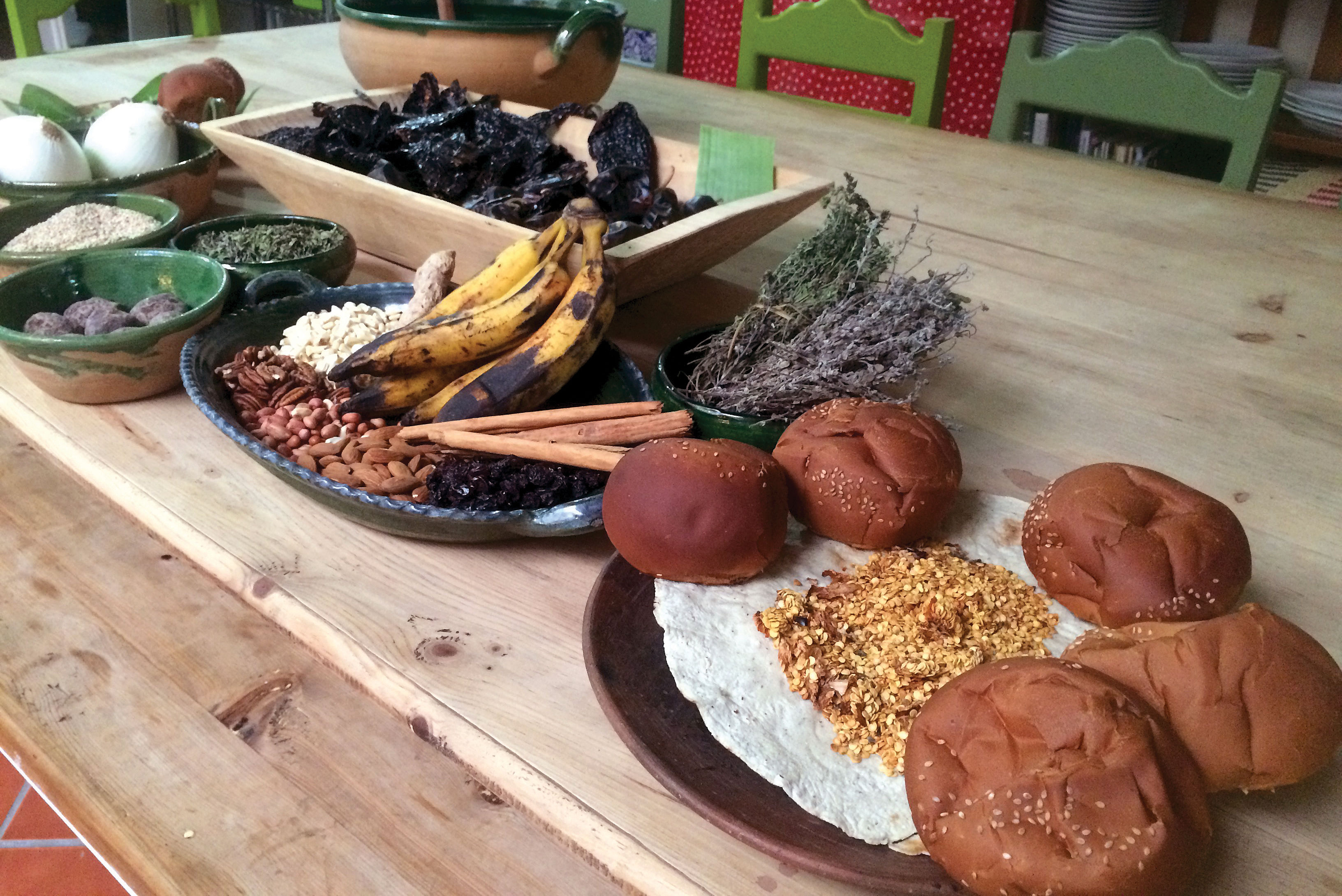Are the Latest Endeavors from Beard-Recognized Chefs at Xochi and The Pass Worthy of a Medal?
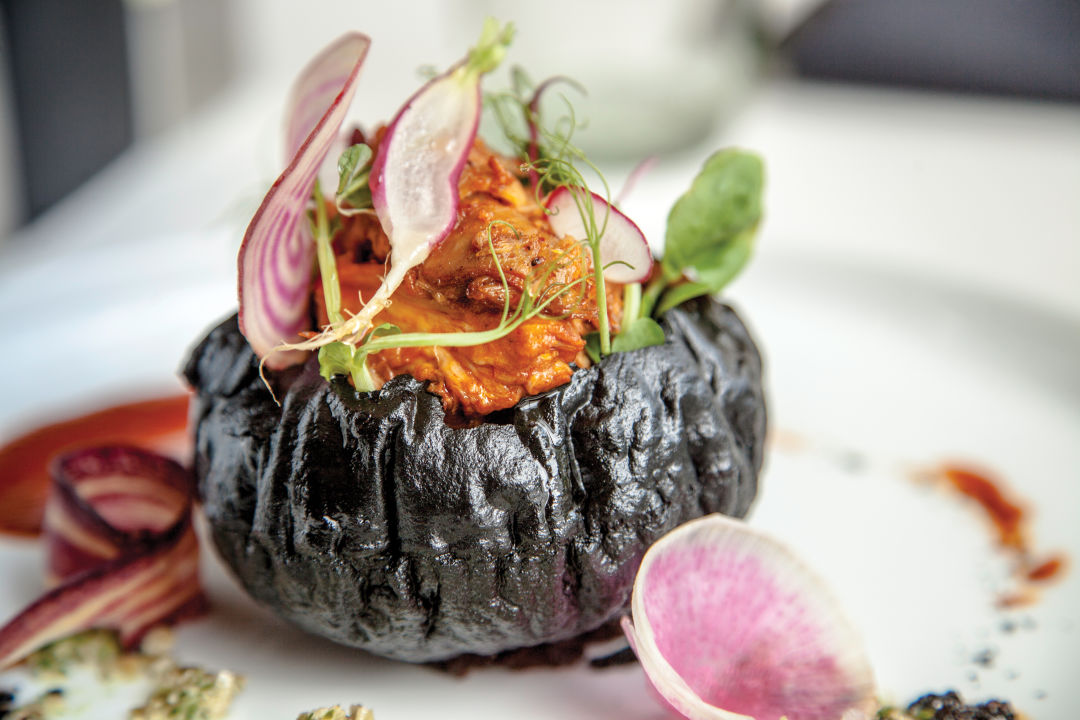
Xochi's inflatida de conejo
Image: Cooper + Ricca
There are few things food writers love more than taking the pulse of fine dining, then declaring its time of death. And maybe it is moribund in some cities. But in Houston, big-ticket feasts are only becoming more diverse.
Mere months after opening Xochi, Hugo Ortega, best known as the chef behind Hugo’s and Caracol, finally ended his bridesmaid’s streak when he won the James Beard Foundation award for Best Chef: Southwest in his sixth year as a nominee. And it’s easy to see why. With the new restaurant, Ortega is elevating rustic Oaxacan cuisine into a symphony of flavors and visual artistry that may be a step up from even the greatest hits of the Mexican state itself.
Fine doesn’t mean fussy here, however. Get to the restaurant, located inside downtown’s still-new Marriott Marquis, early enough, and yuppies will have conquered the bar area for an after-work margarita or shot of mezcal. Soaring ceilings give the place a buoyant feel, while servers are helpful, friendly, and far from formal.
Diners should come with a sense of humor and open mind—it’s easy to avoid the dishes topped with grasshoppers or moles made with flying ants, but don’t forget: In parts of the world where meat is prohibitively expensive, insects provide nutty-tasting protein.
Many of Xochi’s dishes were familiar to me, having spent the better part of a week last summer in Oaxaca with Rodolfo Castellanos, the chef/co-owner—along with Ortega and his wife/co-owner Tracy Vaught—of Oaxaca City restaurant Origen. Some are further elevated versions of Castellanos’s already refined moles.
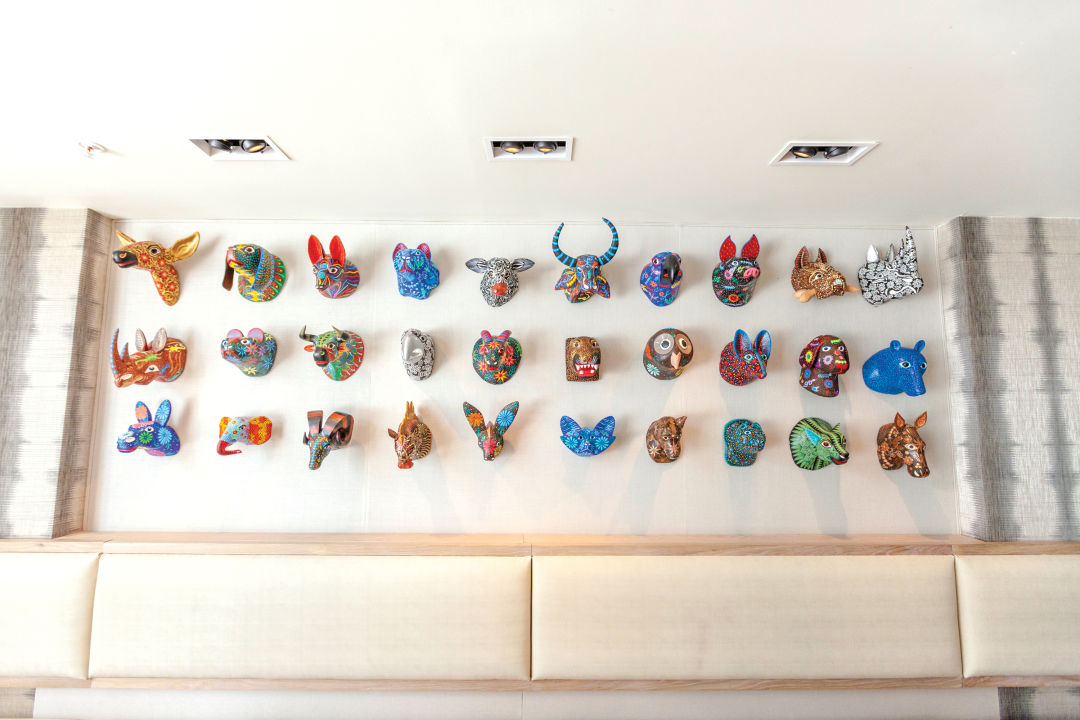
Oaxacan art at Xochi.
Image: Cooper + Ricca
Those stews, perhaps the best-known food to migrate north from Oaxaca, are well-served by Ortega’s exacting palate. Goat is served in a crispy rectangle sunk into a sea of blackened chilhuacle pepper mole. Black-skinned chicken comes with matching mole negro. But a crackly-skinned duck leg perhaps benefits the most from the treatment, thanks to its estofado almendrado, a sauce from the Oaxacan coast made with tomatoes, almonds and olives.
Other takes on quotidian fare include the eminently satisfying memelas. Usually puckered masa cakes filled with cheese, slaw and maybe ground meat, Ortega’s corn boats are filled with radish slices, herb salad, and tangy, green salsa de albañil covering boneless chunks of pork rib that rest atop refried beans and crema.
Tlayudas, outsized tortillas grilled over charcoal on the street, are typically not much to look at, spread with lard, refried beans and topped with Oaxaca string cheese. But at Xochi’s lunch, the crisp masa serves as a canvas for varied artworks. A blue corn tortilla is the base for the chorizo version, whose toppings include queso fresco, roasted corn and golden beets. The beef tlayuda is even better, if slightly less painterly, its tangy skirt steak jiving well with stretchy quesillo and a bright topping of herbs and onions.
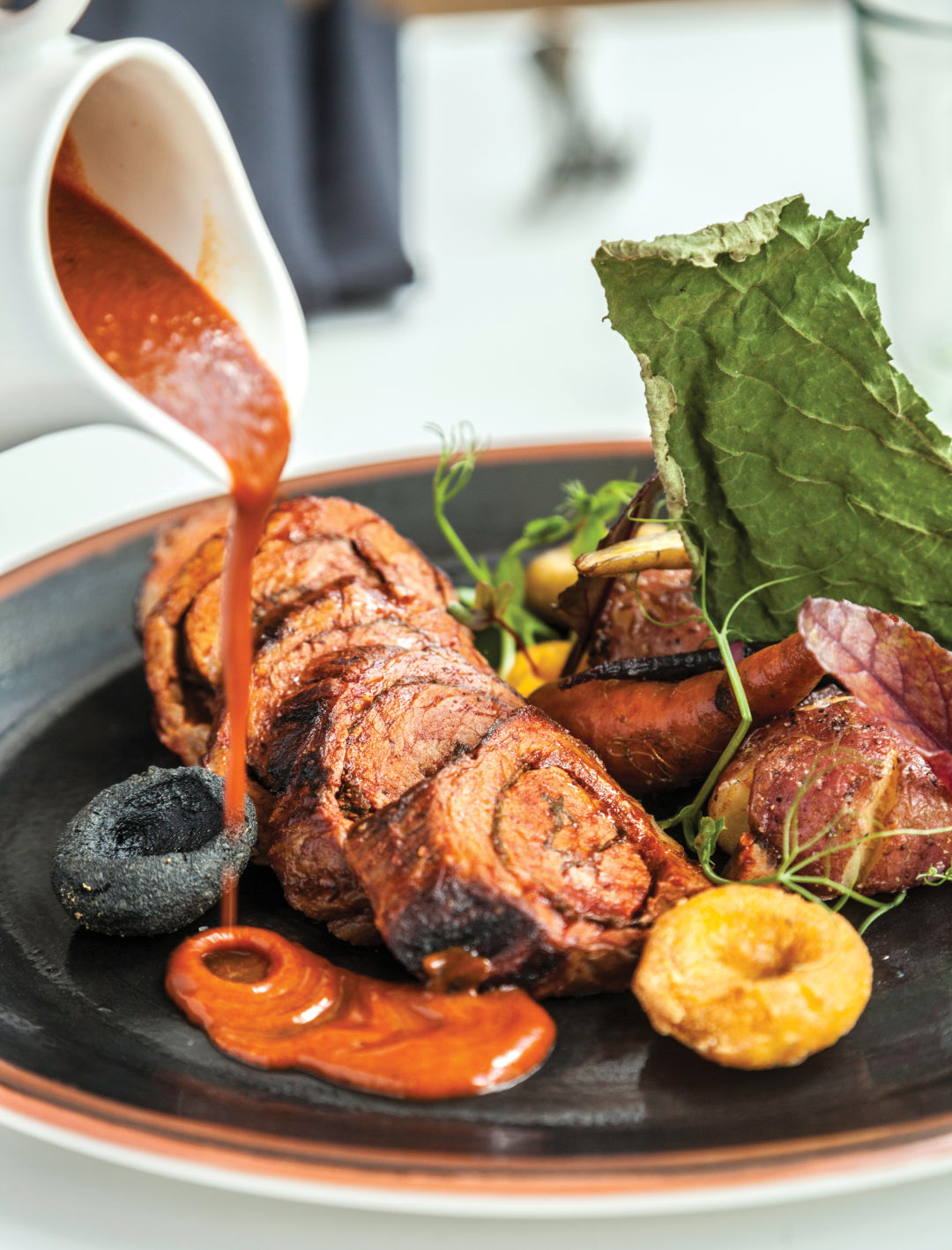
Barbacoa de res de Zaachila
Image: Cooper + Ricca
But few dishes in Houston can compete with the inflatida de conejo, an obsidian tortilla puff that tastes of ash—a prevalent ingredient in Oaxacan cuisine—filled with achiote-dressed rabbit and bookended by a green, pesto-like and intense red chile sauces. It’s a delicious, complex dish whose range of flavors calls to mind a deconstructed mole.
When I visited the small town of Zaachila, I was enchanted by a meal of almost paper-thin pork rubbed with achiote and chiles, then rolled with hoja santa, a tarragon-like herb. Ortega’s version of that dish, called the barbacoa de res de Zaachila, takes the form of a braised strip steak painted with angry-red guajillo puya and costeño pepper sauce. It comes with the same cherry-shaped masa dumplings I remembered from Castellanos’s Oaxaca City kitchen, alongside sweet fingerlings and blackened carrots.
All of this is impressive, but diners are unlikely to leave with anything but dessert on their minds. Forget the showstoppers at Hugo Ortega’s other restaurants: The chef’s younger brother, pastry chef Ruben Ortega, has vaulted his game to a new level.
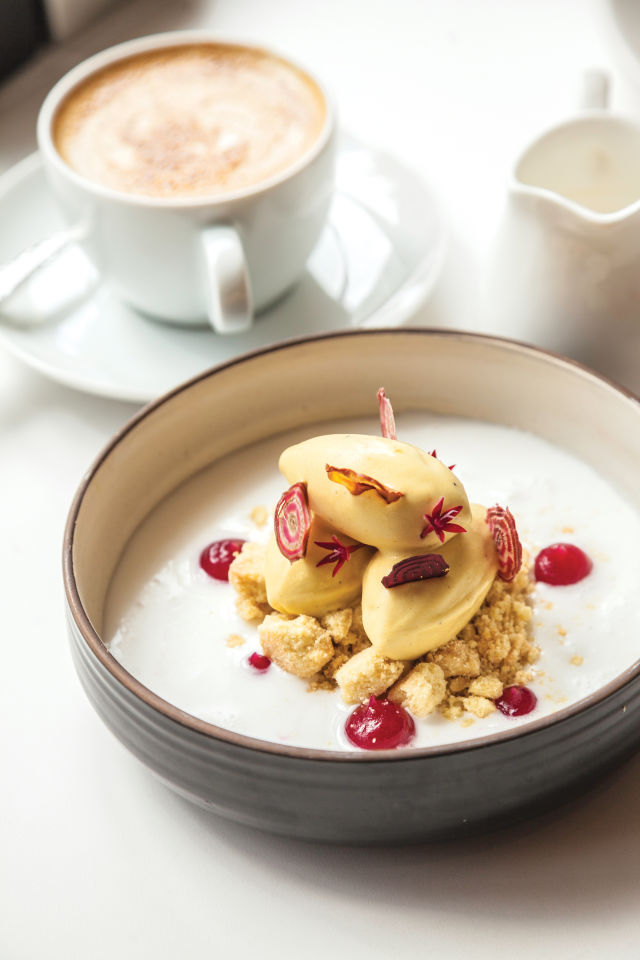
Polvorón de elote
Image: Cooper + Ricca
The dessert menu is divided into chocolate and non-chocolate offerings, and for once, I’m going to suggest leaning away from the bean, despite the fact that the piedras y oro—a nut-filled chocolate tart topped with something like homemade Dippin’ Dots and sheets of gold—would be a showstopper elsewhere.
It pales beside the likes of the polvorón de elote, whose name does no justice to the high-wire balancing act the pastry chef achieves. A crumbled, corn-flavored shortbread serves as a pedestal for nanche ice cream, made from the musky, cherry-like fruit on offer at practically every market stand in Oaxaca; red and yellow beet chips protrude from the ice cream like butterfly wings. Next to this are magenta blobs of prickly pear gelée, which keep their shape when a server pours gently boozy coconut-mezcal sauce over them. From earthy to vegetal to alcoholic, each flavor stands out while fusing with the others, in a way that suggests they’re as predictable as chocolate and strawberry.
This is the genius of Xochi as a whole—from insects to herbs rarely seen stateside, the chefs find ways to make the unfamiliar enticing and inspiring. Every upscale restaurant should aspire to do something similar.
Chefs Terrence Gallivan and Seth Siegel-Gardner were Beard Award semi-finalists again this year for one of the two concepts they house under a single roof on the border of Midtown and Montrose. It was the third time they’ve been recognized for The Pass, the more formal, tasting-menu-only sibling to pizza-and-pasta-focused Provisions.
In May, the chefs scaled back their ambitious nine-course tasting menu at The Pass to a more concise five-course affair in an attempt at making their fine-dining restaurant more approachable. It was a good decision; the truth is, five courses are more approachable for the average diner. And for people like me who do want more, there’s an option to add up to three courses.
When I visited, my dining partner and I ordered a five-course vegetarian tasting, a five-course omnivorous tasting, and all three add-ons. As is the case with any good tasting menu, dishes started light, with a “fish taco” of raw snapper and an uni torchon in a puffed kombu shell (though I preferred the avocado-filled veggie version). They progressed to a trio of bellies—lamb bacon, pork and tuna—crisped on a hot stone à la table (though in the veggie version, the eggplant never quite cooked all the way). Dessert was mercifully light after the significantly sized meal.
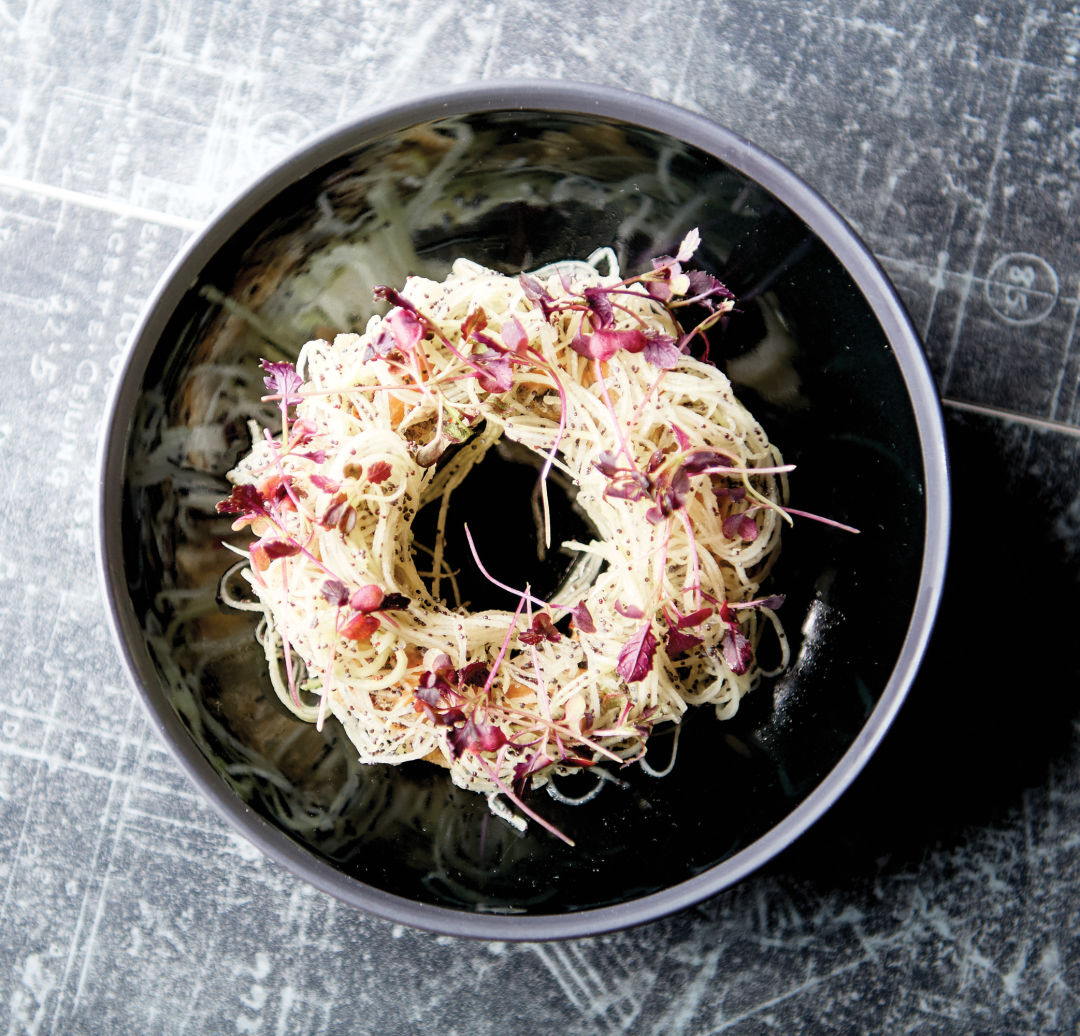
Doughnut-shaped head cheese at The Pass
Image: Cooper + Ricca
The bonus offerings are always united by a theme, which, when I visited, was ingredients from Yonder Way Farm in Fayetteville. These included head cheese made from the farm’s Red Wattle–Old Spot heritage pigs formed into the shape of a doughnut, then battered and fried. Instead of a glaze, a layer of mustard bonded an apple-kohlrabi slaw dotted with poppy seeds to the ring of pork. Though I enjoyed the contrast of fatty with astringent, the slippery slaw did the initially crisp jacket no favors. Gnocchi tossed with spicy coppa cut from the same pigs, meanwhile, was a reminder that dry cures are among the culinary skills at which Gallivan and Siegel-Gardner excel most.
But that coppa may be best sampled next door at the more casual Provisions. There, the Ham O’ the Day is a staple, along with cured meats from duck confit to the mortadella and capicola in an Antone’s-style po’ boy that recalls the building’s long-ago tenant. The bounty available at Provisions, in its comparatively relaxed environment, can make The Pass seem painfully staid by comparison. One friend compared the formal half’s stark white walls and black ceilings to Purgatory, not an unfair appraisal.
Is it culinary Purgatory, too? Maybe. Shaving down from nine courses to five doesn’t change the clinical feeling of the room nor dishes that sound great when the server describes them, but which often end up as less than the sum of their well-chosen parts, as many of our evening’s creations stumbled either in execution or concept.
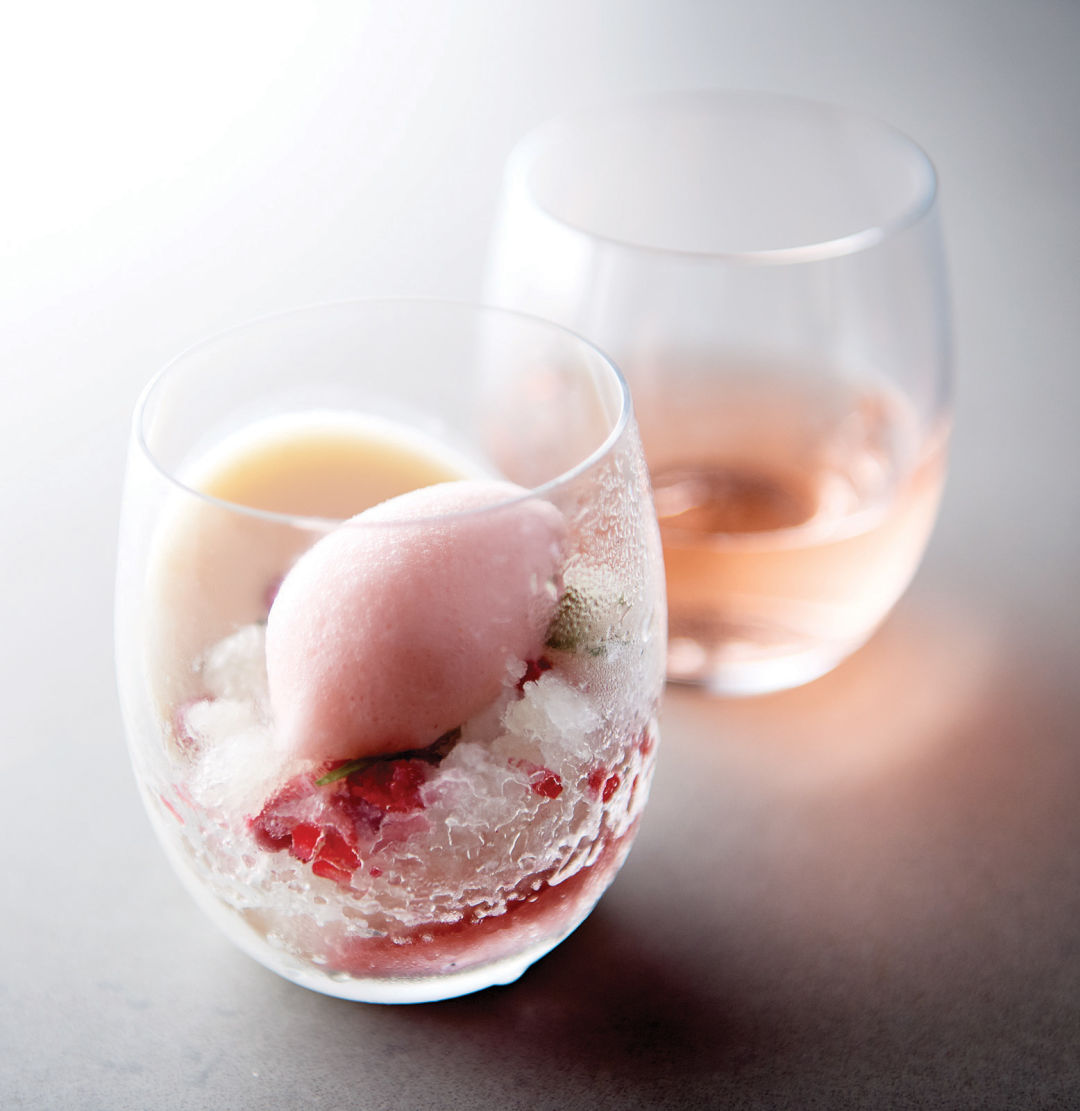
The Pass's rosé dessert
Image: Cooper + Ricca
Occasionally, however, an offering met expectations. On the vegetarian menu, I was charmed by a single, large mushroom-filled raviolo. Paired with morel mushrooms, petite heirloom carrots, and wild bay leaves, every element recalled the flavors of an abundant forest floor. The pairing of Ciderman, a yeasty, Normandy-made cider, intensified the effect and transformed it.
In general, such liquid accompaniments were flawless, from a Sloe Gin cocktail with rhubarb and cucumber complementing a jellied watermelon and tomato gazpacho, to a soothing, vanilla-scented barleywine with a dessert of rosé granita speckled with tart lingonberries and vanilla cream.
There’s no question that there are many things to appreciate about The Pass, but until the locally sourced meals ascend to heaven, I’m more likely to be found gnawing on a pizza at Provisions. Fine dining isn’t on life support, but with so many excellent budget options, it has to sing for my supper.
